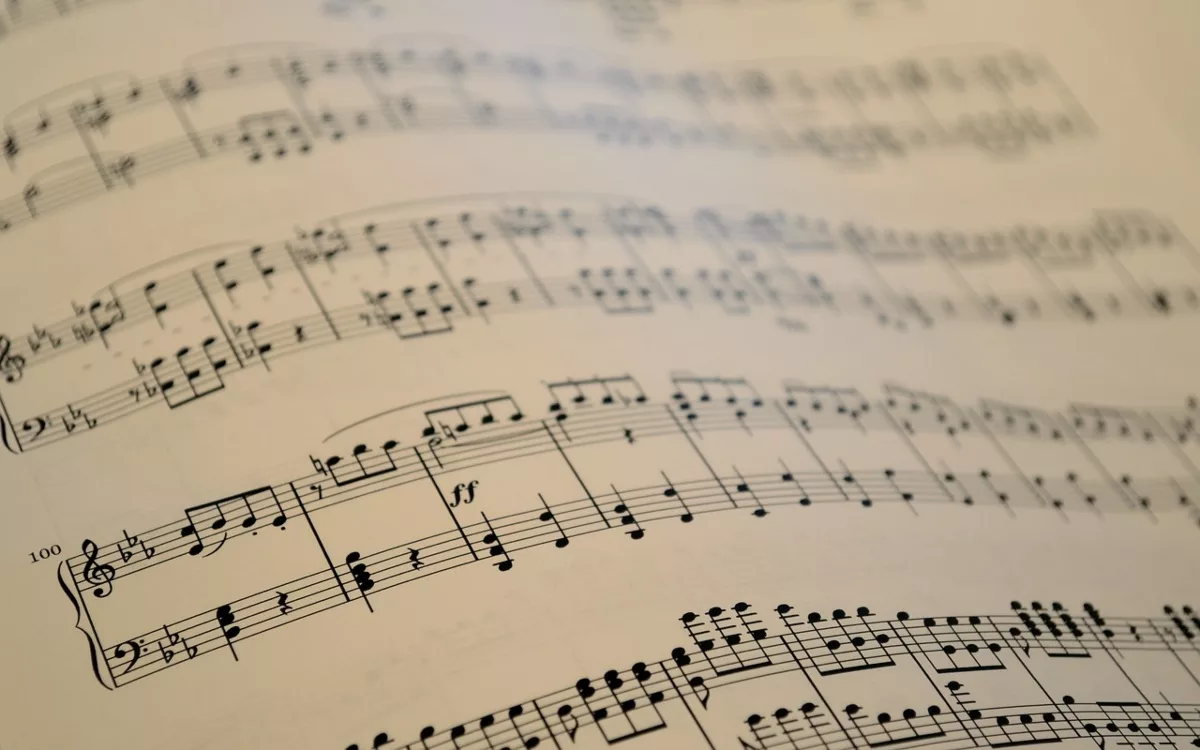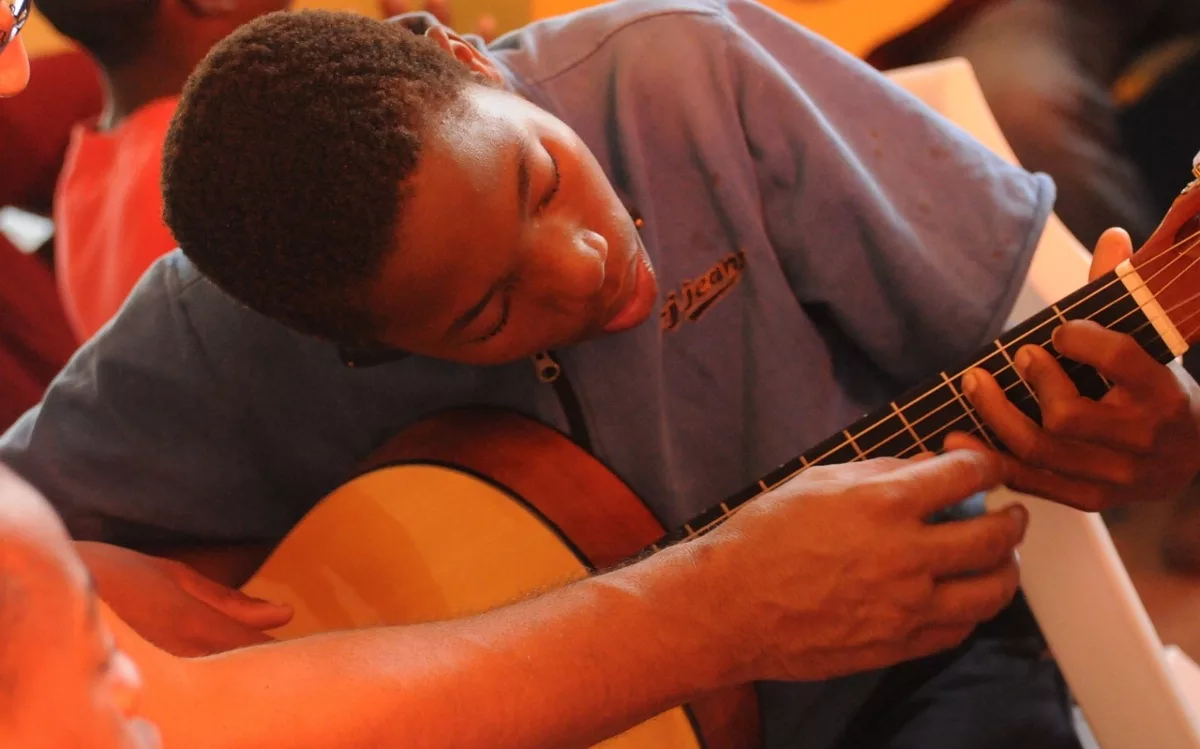The acoustic guitar, with its beguiling simplicity and poignant resonance, has long been a fixture in the echelons of music history. Its origins can be traced back to the 16th century when it was first introduced in Spain as an instrument known as vihuela.
It went through various evolutionary phases before arriving at its modern form in the 19th century, courtesy of Spanish luthier Antonio Torres Jurado. His innovative craftsmanship enhanced the instrument’s size, sound quality, and tuning stability, effectively setting the standard for all future acoustic guitars.
In terms of global cultural significance, it transcends geographical boundaries and musical genres alike. From Flamenco music in Spain to country ballads in America; from Gypsy jazz in France to Bossa Nova rhythms in Brazil – each culture adopted this versatile instrument and imbued it with a unique style, thereby broadening its global appeal.
The Quintessential Role of Acoustic Guitars In Music
As an enduring symbol of musical expression, the acoustic guitar has etched an indelible mark on multiple facets of music. One can scarcely imagine Rock n Roll without envisioning a Gibson J-200 strummed by Elvis Presley or Folk music without picturing a Martin D-28 played deftly by Bob Dylan. Virtually unrivaled in its portability and affordability compared to other instruments like pianos or violins, acoustic guitars have democratized access to creating music.
Hence they have become fundamental tools for budding songwriters who rely on their melodic strums for composing timeless songs. Furthermore, their distinctive tonality enhances virtually every genre from pop ballads and blues improvisations to country anthems and indie rock riffs.
Beyond just being an accompanying instrument though, acoustic guitars are often at the forefront – driving rhythm or delivering soul-stirring solos that evoke raw emotions; often transforming simple tunes into profound auditory experiences. It’s no wonder then that this humble six-stringed instrument continues to resonate with audiences worldwide; sustaining its relevance throughout myriad shifts in musical trends.
The Beauty of Acoustic Guitar
Unraveling the Versatility Across Various Genres
The acoustic guitar stands as a testament to the boundless versatility of musical instruments. Its genre-spanning capabilities make it an indispensable tool for musicians across the globe.
Whether it’s the soulful strumming in blues, sharp plucking in flamenco, gentle fingerpicking in folk music, rhythmic pressure in reggae, or even aggressive riffing in rock; the acoustic guitar adapts gracefully to each context. The language of music is truly universal & one place to start learning it that we recommend is StayTunedGuitar.com. The instrument holds a unique ability to morph its sound to fit into any musical landscape, thus echoing varied cultural expressions and emotions.
Moreover, this chameleon-like quality extends beyond genres and permeates different eras of music.
Be it classical compositions from centuries past or modern pop chart-toppers; the acoustic guitar lends its signature touch everywhere. This characteristic makes it a vital choice for musicians looking to explore diverse styles and techniques—it is as if acquiring multiple instruments within one.
Echoing Unique Sound and Resonance
In addition to its versatility, what sets the acoustic guitar apart is its distinct sound and resonance. An acoustic guitar relies on natural acoustics rather than electronic enhancement for amplification—its hollow body is designed ingeniously to echo sounds created by plucked strings through air vibrations inside its chamber. This physical attribute creates a warm, rich tone that truly cannot be mimicked by any other instrument.
Each strum reverberates with organic fullness and depth—the wooden body resonating with each note struck to produce sounds ranging from mellow whispers to powerful roars. And this variance doesn’t appear randomly but is meticulously controlled by how softly or aggressively you play—offering an intimate connection between musician and instrument.
Simplicity Merged with Elegance: Design Aesthetics
A glance at an acoustic guitar reveals an epitome of simplistic design paired with elegance—a testament that beauty need not be complicated but can emerge from pure functionality shaped artistically. The harmony between curves and lines on its body creates a timeless silhouette—an iconic image deeply engraved into our cultural consciousness.
But beyond mere aesthetic appeal lies thoughtful craftsmanship aimed at optimizing sound quality—the choice of wood influencing tone richness, neck width impacting playability, string spacing affecting tonal balance…each detail carefully considered ensuring both visual appeal & sonic excellence coexist harmoniously within this single instrument. So when you hold an acoustic guitar – you’re not just holding another musical instrument – but a piece of art meticulously crafted utilizing principles of engineering & design aesthetics fused seamlessly together.
Harmonizing the Mind: Cognitive Benefits of Learning Acoustic Guitar
Immersing oneself in the realm of musical theory and the intricacies of acoustic guitar playing is akin to embarking on an intellectual adventure. The cognitive benefits are profound.
Firstly, learning to play the acoustic guitar has been shown to enhance memory. This occurs as one navigates through complex chords and scales, remembering fretboard patterns, and memorizing melodies.
The mental gymnastics involved in this process stimulate our brains, thereby improving our memory capabilities. Moreover, it has a significant impact on concentration levels as well.
Playing the guitar requires a high degree of focus; from reading musical notation or tablature to coordinating your fingers’ movements across the fretboard while maintaining rhythm and timing. This intense concentration translates into other areas of life as well, enhancing overall attention spans and honing focus.
A Resonance of Emotions: Emotional Benefits of Learning Acoustic Guitar
The emotional benefits derived from learning to play the acoustic guitar are manifold. At its core, music is a form of emotional expression; it allows us to manifest our feelings in ways words often cannot capture adequately.
The very act of creating melody and harmony can serve as an emotional outlet, providing a cathartic release for pent-up emotions. Furthermore, playing an acoustic guitar can also serve as an effective stress reliever.
The soothing tunes produced by strumming chords can calm your nerves after a taxing day or during periods of heightened anxiety or tension. It offers an escape; a sanctuary where one can lose themselves in their music leaving worries behind momentarily.
Rhythmic Physicality: Physical Benefits Of Learning Acoustic Guitar
On surface-level observation, one might not immediately link physical fitness with playing an instrument like the acoustic guitar. However, it does indeed improve certain physical abilities over time – particularly hand-eye coordination and fine motor skills.
This is due in large part to both hands having distinct responsibilities while playing; one hand controls the rhythm by strumming strings while the other forms chords on the fretboard which demands precision timing between both hands. Beyond this bilateral coordination improvement which is crucial for various everyday tasks beyond music making too – learning to play acoustic guitar also enhances fine motor skills significantly by requiring subtle finger movements for tasks like picking individual strings or forming complex chord shapes that demand strength alongside precision control over muscle movement thus enhancing dexterity greatly over time.
Strumming the Strings of Knowledge: Understanding the Parts of an Acoustic Guitar
The anatomy of an acoustic guitar, while intricate, is essential in mastering the instrument. At first glance, the guitar appears to be a simple combination of wood and strings. However, each component plays a pivotal role in producing the distinct sound that makes this instrument so beloved.
The body is typically made from different types of wood and serves as the resonating chamber. It consists of three parts: the top (or soundboard), back, and sides.
The soundboard vibrates as strings are plucked to create music. The neck extends from the body and is usually composed of maple or mahogany; it houses both the fretboard (or fingerboard) and headstock.
The strings run across these areas with their tension adjusted by tuning pegs located on the headstock. A good understanding of these components will serve as a sturdy foundation for your journey toward becoming a proficient guitarist.
Ringing True: Basic Chords and Strumming Patterns
Guitar chords are made up by playing more than one note simultaneously – essentially they form the harmony. As a new guitarist, there are several fundamental chords you should familiarize yourself with – major chords such as A, C, D, E, G; minor ones like Am, Dm & Em; not forgetting also some dominant seventh chords such as A7 & E7.
Strumming patterns give rhythm to your chord progressions thereby truly enlivening your playing style. Start by learning basic downstrums on each beat or try alternating between downstrums and upstrums — down on beats 1 & 3 then up on beats 2 & 4 — commonly used in various genres.
Reading Between Lines: Guitar Tablature and Chord Charts
A vital aspect in learning to play acoustic guitar is understanding how to read tablature (often shortened to ‘tabs’) and chord charts; they guide you where to place your fingers on frets for specific notes or chords. Tabs are simple notations representing six horizontal lines that mimic strings on a guitar’s fretboard with numbers written along them denoting which fret should be played.
For reading chord charts that visually represent fretboards – recall seeing an ‘X’ or ‘O’ above the string symbol? They signify whether it needs to be played open (‘O’) or not at all (‘X’).
Meanwhile, dots placed within squares are indications for finger placements across frets. Mastering these basics early on can ensure smoother progression onto advanced techniques plus broaden both technical skills repertoire further down the line thus truly enhancing overall musicianship quality.

Advancing Your Skills
Navigating the Intricacies of Advanced Techniques
As you delve deeper into the world of acoustic guitar playing, mastering advanced techniques becomes vital. Fingerpicking, a technique where you pluck the strings with individual fingers rather than using a pick, bestows upon your music a more intimate and intricate sound. Each finger becomes an independent voice singing its own melody.
Genres like folk, blues, and classical frequently employ this method. Slide playing is another such technique that adds an entirely different flavor to your music.
It involves using a ‘slide’, typically made from glass or metal, moved along the strings to create smooth transitions in pitch. This infuses your melodies with a hauntingly beautiful resonance – characteristic of blues and country genres.
The Bedrock of Melody: Music Theory
Understanding music theory is akin to mapping out uncharted territories; it gives musicians structure and direction. Knowledge of scales and chords forms the foundation for improvisations – ad-libbed passages played within the context of established musical structures. It’s like having an intimate conversation with your instrument; you suggest a topic (a scale or chord) and then embellish it in real-time.
Moreover, appreciating how chords interact within particular keys can prove instrumental when composing music. You begin to grasp why certain chord progressions evoke specific emotional responses – perhaps melancholy or joy – giving you control over the mood and atmosphere in your compositions.
The Odyssey through Musical Genres on Acoustic Guitar
The beauty of learning acoustic guitar lies in its versatility across multiple genres. Every genre has nuances that make it unique – be it rhythm patterns, melodies, or even specific techniques employed more predominantly in one genre than another. For instance, exploring country music might lead you to discover ‘chicken pickin’,’ an exciting technique involving picking that gives notes a staccato effect typical for this genre’s sound.
On the other hand, diving into flamenco could introduce you to rapid finger strumming – rasgueado – imbuing your performances with a fiery passion intrinsic to Spanish culture. The journey through different genres would not only broaden your musical horizon but also help cultivate adaptability – able to mold your skills according to different styles.
The Symphony of Strings: Role in Songwriting and Composition
In the realm of songwriting and composition, the acoustic guitar offers an unparalleled array of possibilities. Its tonal range, versatility, and intimate character make it a fundamental tool for composers across various genres, from folk to rock to blues. The guitar’s unique ability to meld chords, melodies, and rhythms seamlessly together provides a rich spectrum for musical exploration.
Not only can it serve as a rhythmic foundation but also as an evocative lead instrument. Moreover, the creative process on an acoustic guitar often yields different results than on its electric or digital counterparts.
The raw vibrations from its strings create an organic sound that resonates directly with our emotions. It invites songwriters to experiment with open tunings and unorthodox playing techniques that spawn innovative harmonies and progressions which are harder to stumble upon using other instruments.
Strumming Through History: Famous Acoustic Guitar Players
When discussing the artistry behind acoustic guitar playing, one cannot overlook the luminaries who’ve shaped its sonic landscape. From Robert Johnson’s Delta Blues fingerpicking style that laid down roots for rock n’ roll, to Bob Dylan’s expressive storytelling through intricate chord arrangements during the folk revival—these legends have showcased the boundless potential of this humble instrument.
More contemporary virtuos like Tommy Emmanuel and Sungha Jung have taken it another step further by perfecting percussive techniques that transform their guitars into full-fledged orchestras unto themselves. Their performances are a testament not only to their personal mastery but also demonstrate how far individual creativity can stretch when working with something as versatile as an acoustic guitar.
Culture’s Six-Stringed Muse: Influence on Popular Culture
The influence of the acoustic guitar stretches far beyond concert stages—it strums along with our culture’s heartbeat itself. Its distinctive sound has become synonymous with introspective singer-songwriter numbers in cafes; campfire singalongs under starry skies; or reflective solos in thought-provoking films—all reflecting our shared human experiences.
In popular media like movies or advertising, nothing quite captures earnestness or nostalgia like a gently strummed chord progression does. Similarly, culturally impactful moments like Woodstock or even more recent gatherings such as the Glastonbury Festival owe much of their defining spirit to artists wielding their trusty six-stringed companions on stage—providing not just music but memories that resonate for generations.
The Social Aspect Of Playing Acoustic Guitar: A Melodic Connection
Jam Sessions with Friends or at Local Venues: The Symphony of Friendship
The acoustic guitar, with its rich and mellifluous tone, holds a unique capacity to bring individuals together, fostering collective creativity. Imagine a cozy evening by the bonfire, friends gathered around in a convivial circle, and the air filled with the harmonious strumming of your guitar. This is the magic that jam sessions can create.
They provide not only an opportunity to share your skills but also a platform to learn from others’ musical styles and techniques. In addition, local venues often host open-mic nights inviting amateurs and professionals alike.
These public forums offer you a chance to perform before an appreciative audience that shares your love for music. It not only helps improve your stage presence but also boosts confidence as you weave enchanting melodies on your acoustic guitar.
Joining a Band or Ensemble: Creating Harmonies Together
Joining a band or ensemble opens up new avenues of exploration for an acoustic guitarist. The collaborative environment encourages musicians to marry their talents resulting in compositions that resonate with each member’s unique touch. Your role as an acoustic guitarist here is crucial; you are responsible for setting the rhythm and providing harmonic support.
Moreover, being part of a group ensures constant learning opportunities due to diverse musical influences within the band or ensemble. You get exposed to different genres and playing styles which will undoubtedly enrich your overall musical experience and widen your artistic range.
Sharing Your Talent Through Performances or Online Platforms: Spreading Melodies Far & Wide
Performing live offers an unparalleled thrill; it allows you to connect directly with your audience through a mutual appreciation for music’s emotive power. Regardless of whether you’re playing intricate fingerstyle patterns on-stage at local concerts or strumming classic folk tunes at intimate cafes – every performance enhances your ability as an artist.
The digital age provides further platforms where one can showcase one’s talent on online platforms like YouTube or SoundCloud, reaching audiences globally without geographical constraints. A well-received video might go viral overnight making you popular amongst netizens across continents while allowing you insights into their feedback—a vital tool for continuous improvement.

The Harmonious Journey of Learning Acoustic Guitar
The acoustic guitar is more than just a musical instrument; it’s a vessel that carries history, culture, emotion, and stories. By deciding to learn this versatile tool, you’re not only enhancing your own skillset but also connecting with countless artists and listeners who’ve been moved by the acoustic strings’ beautiful resonance. Embracing the acoustic guitar implies appreciating its unique sound and the simplicity of its design—an elegance that transcends across various music genres.
As you embark on this journey, remember the numerous benefits it offers. Beyond crafting beautiful melodies and rhythms, you’re also augmenting cognitive abilities such as memory, concentration, and creativity.
Emotionally, it serves as a stress reliever and an expressive outlet for your feelings. Physically too, playing guitar improves hand-eye coordination and fine motor skills.
The learning process begins with understanding the basics: becoming familiar with the instrument’s parts, grasping simple chords and strumming patterns, or reading guitar tablature and chord charts. As you progress further into this melodious voyage, advanced techniques come into play—fingerpicking or slide playing; understanding music theory for composition or improvisation becomes crucial.
In terms of artistry involved in playing an acoustic guitar—be it for songwriting or performing—it shapes popular culture immensely thanks to iconic players who have inspired millions worldwide. Moreover, proper maintenance of your instrument ensures longevity so that its enchanting sound continues to entrance one generation after another.
Yet importantly—the social aspect; whether jamming sessions amongst friends or performing at local venues—the community experience around acoustic guitars is genuinely heartwarming. Sharing your talent through performances online can connect you globally with other enthusiasts—after all, music knows no boundaries!
Readers May Also Like:
 Understanding the Anatomy of an Acoustic Guitar: A Clear Guide
Understanding the Anatomy of an Acoustic Guitar: A Clear Guide 8 Creative Ideas to Spark User Engagement on Your Social Profiles
8 Creative Ideas to Spark User Engagement on Your Social Profiles Tech and Faith: How Christian Dating Apps Influence Everyday Choices
Tech and Faith: How Christian Dating Apps Influence Everyday Choices 5 Tips for Better Online Dating Conversations
5 Tips for Better Online Dating Conversations

